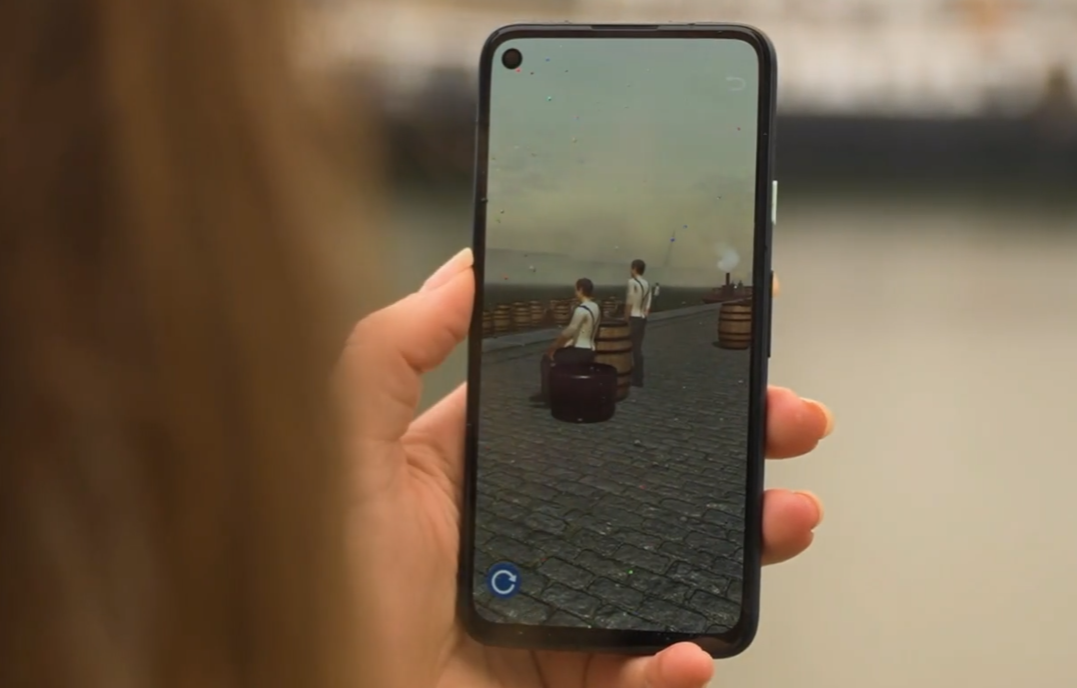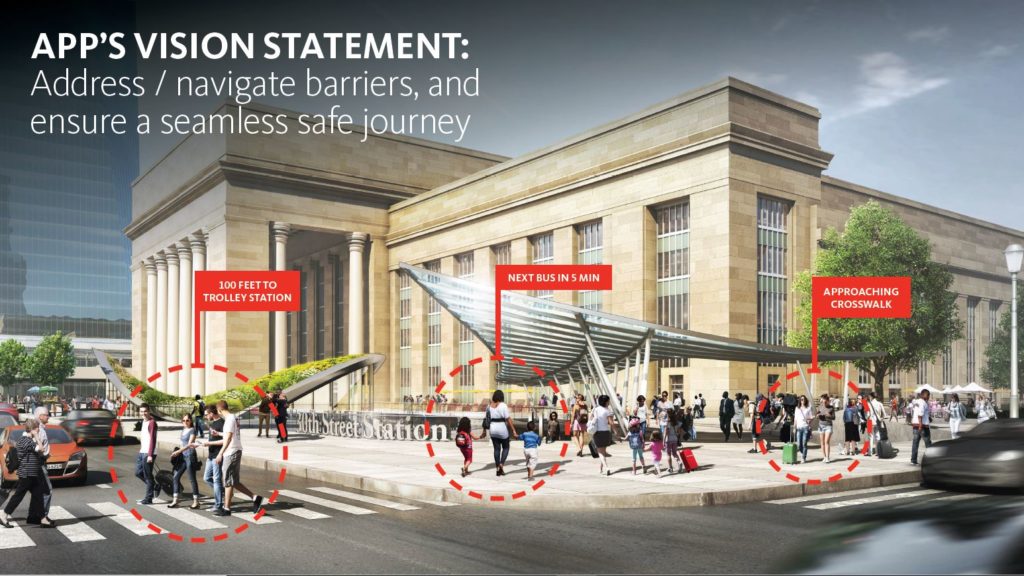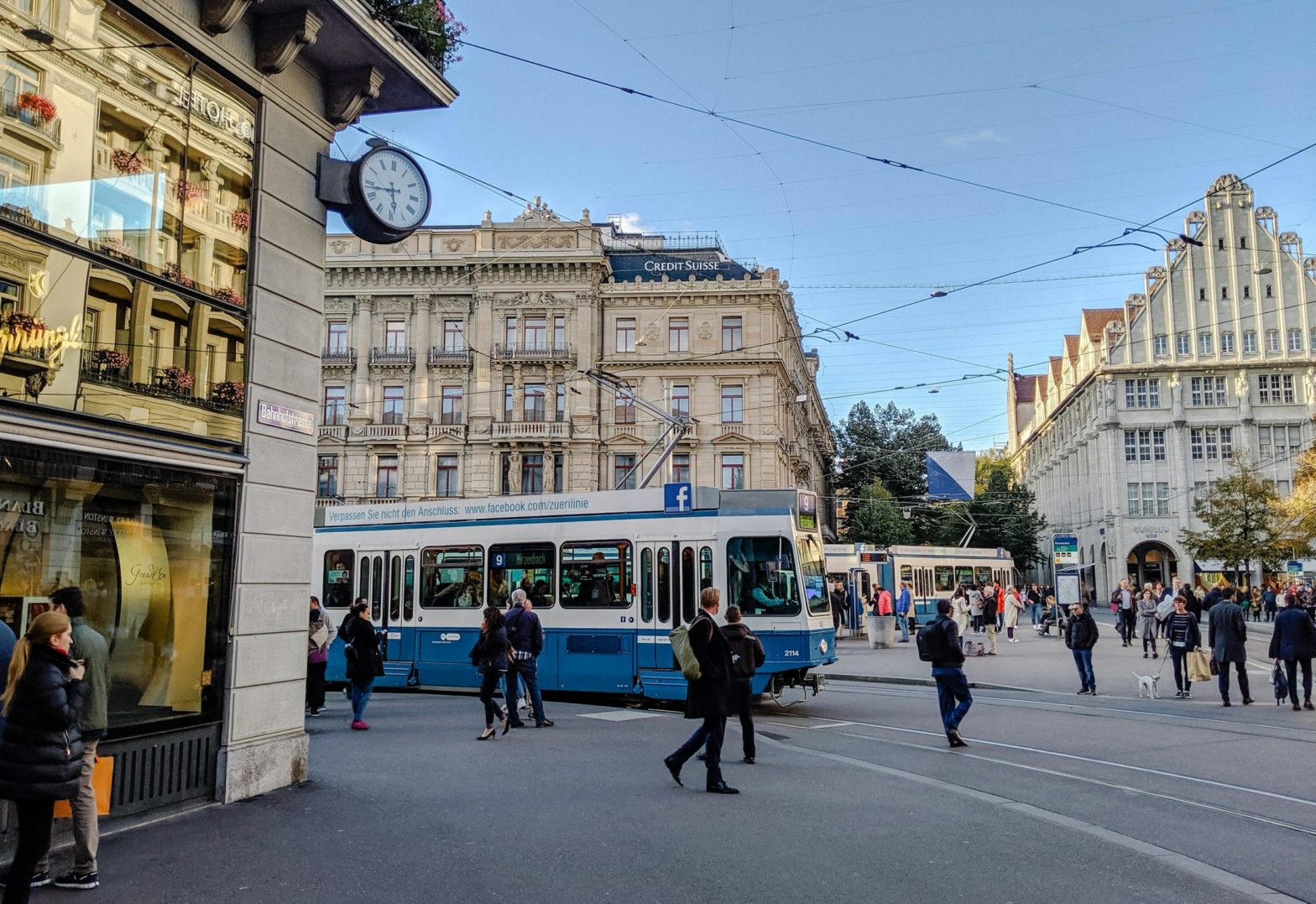
How augmented reality is coming to life in cities
13 March 2023
by Sarah Wray
City leaders say augmented reality (AR) is coming of age, with a growing number using the technology to achieve goals such as re-invigorating tourism after the pandemic, engaging residents in decision-making, and making transport systems more accessible.
While visitor experience is a popular entry point, this is paving the way for other opportunities including making cities more accessible for disabled residents and visitors.
Dublin’s ‘Netflix’ approach
‘Doors into Docklands’ is the first in a series of mobile app-based discovery trails using AR in Dublin. The initiative aims to encourage people to explore more of the city by bringing areas to life in new, immersive ways.

The app was co-funded by Dublin City Council and tourism development authority Fáilte Ireland and developed by specialist technology company Peel X.
Guided along GPS-enabled walking tours, users can hold up their phones and experience the Guinness barges sailing down the River Liffey, the Crimean Banquet held in the CHQ building, and the story of the famine statues with a cast of AR characters telling their stories along the way.
Barry Rogers, Head of Dublin’s City Tourism Unit and previously the city’s first Smart Tourism Manager, said: “It might seem like it’s still coming down the line, but actually, in terms of what visitors expect and what you can do with the technology now, we’re very much in a sweet spot for augmented-reality development.
“Visitors are starting to expect immersive storytelling and digital experiences – through phones specifically. It’s really important for cities to get involved in that early and start curating the story.”
As well as the app itself, Rogers says an innovative aspect of the project for other cities is the underlying tender framework that was developed so that other members – including Fáilte Ireland, Dublin Port Company, Waterways Ireland and the four Dublin local authorities – can build immersive experiences on the platform much more efficiently than if they started from scratch.
“That’s like a Netflix approach to framework development,” says Rogers. “It became a technology platform which multiple people could build on, invent on and use.”
Based on input from a range of experts, the framework also includes specific language around augmented reality, content development, sharing, rights, and reproduction, which Rogers says help to “future-proof” the work.
Stirling: ‘The AR city’
Stirling in Scotland has outlined its ambition to be “the world’s first fully augmented reality city”.
Via a phone app, Stirling’s historic city centre and attractions are overlaid with interactive information, graphics and 3D models to create “a fully immersive and dynamic experience that no other city currently offers”.
Virtual signs respond to users’ needs and interactive games unlock rewards and incentives.
Charlie Croft, Marketing and Tourism Manager at Stirling Council, said the tool’s unique selling point is that it is city-wide and brings together augmented and mixed reality, wayfinding and gamification.
“We’ve taken all of those elements and the newest versions of those and woven them together into a city-based app that is designed to encourage people to explore more, spend more time in the city and hopefully keep contributing to the economy,” he said.
Stirling Council has invested £200,000 (US$240,000) in the project via funding from the Scottish Government’s Place Based Investment Programme, and the initiative also aims to showcase the city’s investment in fibre broadband and the rollout by telecom company BT of 4G and 5G.
Croft says it lays the foundation for more use cases too.

“What we want to do is continue to invest in the app as we move forward and create more content and critically give businesses and event organisers in the city the opportunity to contribute to the app as well.
“If they want to do something cool, something interesting to help attract footfall, we’re really keen to work with businesses and get their investment in this product too.”
The app has also garnered attention across the council, with colleagues intrigued about potential beyond tourism. Planning teams, for example, could use the technology to showcase what proposed buildings or other developments would look like and others have spotted educational opportunities.
“We have got the platform with a tourism ‘front end’ but there is nothing to stop us from looking at different uses for other departments, teams or industries that would like to also make use of this technology,” Croft said.
He pinpointed key takeaways for other cities interested in commissioning and developing AR tools.
“Terms like mixed reality, augmented reality and metaverse are all relevant to this project but it’s about making sure that you choose the right language to understand and articulate exactly what it is that you’re trying to achieve. You also have to roll with the tech because we were painting a picture of what we wanted to achieve but we also had to make sure that the tech could deliver on it, which it has.”
“You’ve got to be really, really clear in your vision.”
Resilience
Despite the very different situation in Ukraine, amid the ongoing invasion by Russia, the capital city of Kyiv has also digitised monuments, tourist routes, historical figures and artefacts. The objects are available online and by scanning QR codes on buildings.

It is part of the city’s commitment to using technology to bolster resilience. Kyiv wants to preserve its heritage and prepare for the return of tourism in the future.
Oleg Polovynko, Kyiv’s Chief Information Officer, said: “AR technologies are extremely necessary during the full-scale invasion in Ukraine. Given the fact that Russians have been destroying our history for years, this type of digitalisation helps us to save our history online.
“In the last year, the cities of Ukraine have been subject to constant shelling. Kyiv is no exception and historical monuments are also being shelled. Therefore, the digitisation of cultural heritage is very important for saving them for future generations and to honour the principles upon which our nationality was built.”
Accessibility
Other examples show more emerging uses, such as resident engagement about public spaces in Rotterdam and municipal projects in Culver City.
Accessibility is another key area.
Croft said the AR app in Stirling allows more disabled residents to have tourism experiences virtually – such as the view over Stirling Castle from the Wallace Monument. This hasn’t been possible for some people before due to a spiral staircase which is not accessible for everyone.
“We’re looking at what other accessible tourism projects we can deliver using this technology so that everyone can feel part of the experience even if there are physical barriers that we can’t surmount,” he said.

Public transport is another area of interest. In December 2021, Gensler’s idea was one of two selected in a challenge set by the Southeastern Pennsylvania Transportation Authority (SEPTA) and the City of Philadelphia to use AR to make public transit systems more accessible to everyone.
The challenge was supported by US Ignite, Facebook and Comcast.
Gensler’s solution aims to help transit riders get to and around stations more easily using routing features that show the best path to a station, stop or other destination, while alerting them to obstacles through visuals, audio or haptics like vibrations. The long-term vision for the application includes adding routing information for inside transit stations.

The pilots have not yet run but are still expected to as part of a bigger wayfinding programme, according to David Zaidain, an Associate Practice Area Leader who led the Gensler challenge team.
He said AR is ideal since many older transit systems in the US were not built to be fully accessible
“You can’t just go and rebuild them,” he says.
“Physical solutions can oftentimes be a lot more not only expensive, but also time consuming. These types of digital or technological solutions are a lot more easily implemented and funded. They’re flexible and can be rolled out pretty quickly to help cities recover and implement different strategies.”
Zaidain also sees potential to use AR for visualisation as many cities reimagine public space after COVID-19.
He said any AR initiatives must be “fully accessible” for people with different types of disabilities as well as equitable in terms of technology when not everyone will have the most up-to-date devices.
While AR was once seen as gimmicky, these projects are ones to watch as examples of how the technology could deliver real benefits for cities.











